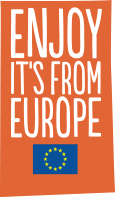In previous articles we investigated the richness of volcanic soils in relation to agriculture. And we wondered how man has been able to adapt to such dynamic and challenging environments. We are now dealing with a crucial aspect of the volcanic environment, which involves and summarizes all the previous ones: time.
THE PROJECT
Volcanic Agriculture of Europe is an international project sponsored by the European Union aimed at promoting the Soave, Soave Superiore, Lessini Durello, Santorini and Monte Veronese PDOs. Protected Designations of Origin supported by the Italian wine Consortium of Soave and Recioto di Soave, the Consortium of Lessini Durello, the Greek Consortium Union of Santorini Cooperatives – Santo Wines and the Consortium for the protection of the Monte Veronese cheese. Volcanic Agriculture of Europe aims to promote, emphasize and make consumers know about the extraordinary characteristics of a form of agriculture and dairy production that differ from the rest thanks to the volcanic origin of the soil. Distinct terroirs that can be separated by thousands of kilometres but that have developed a common predisposition to quality, based on similar pedoclimatic characteristics, geological history, exposure and altimetry. Distinctive traits that can be found in the PDOs of these areas and that are expressed through a natural tendency to have persistent flavours, marked minerality, longevity and incredible complexity of tastes and aromas.
THE VOLCANO
Volcanic environment is one of the most difficult and important “areas of applicability” of the thousand-year-old dialectic between man and nature, in a mutual exchange of energy and experience: the fertility of the earth and the difficulty of cultivating it; the generosity of the elements present in the soil and the extreme heights, where thousands of backs and hands have bent over in order to plough and build terraces, that today are an integral part of a landscape endowed with marvellous beauty.
From vineyards rising on volcanic soil come wines and products that are intense, persistent and by no means aggressive, and whose aging potential can enhance aroma, complexity and persistence on the palate. This has been possible because lava movement over the centuries has been able to counteract the mineral acidity of the soil, generating lands that can yield raw materials of undisputed quality.
TIME
Time also plays an important role in the transformation of agricultural products, and when combined with soil and climatic peculiarities of volcanic areas, it enables the production of various kinds of wines and cheeses. Aging, maceration, bottle refermentations and withering: these are all special processes made possible only through an effective and attentive use of time.
The mineral richness of volcanic soils and the configuration of the terrain allow man to experiment with time and aging techniques. This is a factor that greatly differentiates volcanic products from other wines and cheeses.
Just imagine the evolutionary potential of the white wines from Soave and Santorini: these are wines that, over time, have been impressive for the notes of flint, kerosene, sea breeze and ripe fruit that they have. These are wines that can be consumed today even after 10 years, as shown by the tastings during the Soave Seven, an event organized by the Consortium of Soave.
Time has also enabled the rise of traditions specific to each productive zone: in the areas included in the project, in the case of the Lessini Mountains, winegrowing and livestock farming have millenary origin. Not only have they guaranteed the survival of rural communities, but they have also shaped the landscape by giving the best interpretation of the relationship between man and nature during the evolution of historical periods.
These are values and traditions that have enabled Soave to become part of the FAO’s GIAHS program – Globally Important Agricultural Heritage Systems, the first in Italy for viniculture. A recognition that protects the distinctive features of the territory which produces the Veneto white wine: the Veronese pergola, the hydraulic system made with dry stone walls and terraces (also acknowledged as an intangible heritage by UNESCO), the drying process and the Recioto di Soave as well as the social organization consisting in 3,000 winegrowers gathered in a proper cooperative that, every day, cultivates grapes on volcanic and limestone soils of the denomination.








